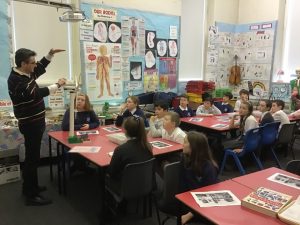Objective: To facilitate pathways to people impacts Led by: Alasdair McDonald
The work within these 5 projects encompasses the essential aspects of device development for offshore renewable energy. The work will be used as a vehicle to inform the general public in the UK and China about the state‐of‐the‐art research undertaken to develop renewable energy devices in order to provide clean, safe, renewable electricity.
Early career researchers in the consortiums will be expected to participate in at least one “public engagement” and at least one “schools engagement” activity in the UK, as well as working with Chinese partners to do similar activities. Some examples of opportunities include:
The Glasgow Science Centre has an upcoming project on “Powering the Future” to showcase, through interactive exhibition, the innovation and excellence involved in future power generation. Strathclyde has a strong track record of engaging with the Glasgow Science Centre (through the CDT in Wind and Marine Energy Systems)
and they will engage with the Glasgow Science Centre to seek opportunities for partnership with this project, e.g. in their “meet the expert” sessions.
Researchers will liaise with and assist PhD students in the various ORE and ORE‐related CDTs (Strathclyde, Edinburgh, Exeter, Cranfield and Oxford) and their schools outreach activities.
Our ambition is to deliver more than 50hours of outreach activities over the 3 years, having designed or modified activities to incorporate elements of research from the programme. In order to facilitate this, we will invite (/pay for) a science communication expert to run a session on public engagement at one of the events.
On the 10th of January 2019, Dr Maurizio Collu (INNO-MPP) was very busy answering many questions of around fifty young and bright students (10-11 years old) of the Milngavie Primary School.

The children asked many questions about Renewable Energy, like what is the most efficient power plant, how much an offshore wind turbine costs, how a wind turbine is installed offshore etc. They were very interested, curious, and knowledgeable about this subject. Maurizio was also asked what his daily job consists of, on which projects he is working, and why he enjoys teaching and researching at the University of Strathclyde.
The children were very interested in hearing how the governments (through EPSRC in UK and NSFC in China) helps funding research to make the maintenance of offshore wind farms cheaper and safer (for more details visit Home Offshore and EP/P009743/1) and to develop multi-use offshore platforms for small communities (EP/R007497/2).
Hopefully, and with a bit of help from the 60 cm high LEGO wind turbine model, some young minds have been inspired toward a STEM career…